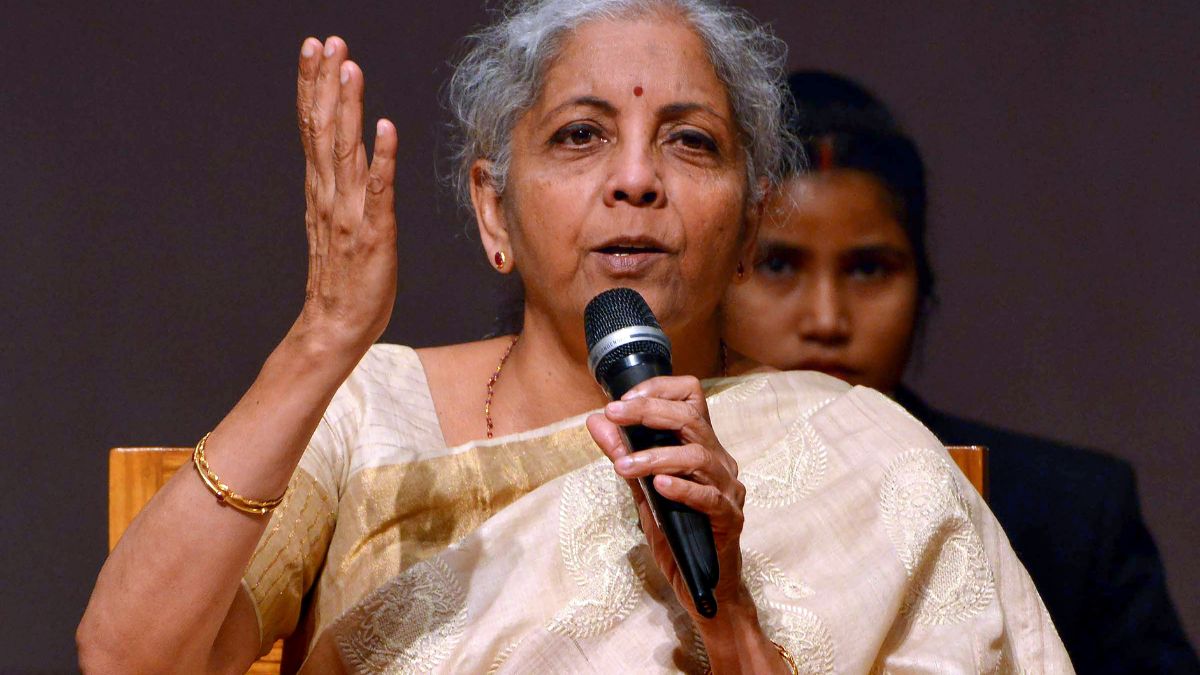Nirmala Sitharaman is set to present the Union Budget on July 23.
This comes after Sitharaman earlier presented the interim budget on 1 February.
Sitharaman is set to make history by becoming India’s first finance minister to deliver seven straight budgets – passing the tally of Morarji Desai.
Desai, as finance minister, had presented five annual Budgets and one interim budget from 1959 to 1964.
Sitharaman previously passed the records of her predecessors Manmohan Singh, Arun Jaitley, P Chidambaram, and Yashwant Sinha – all of whom presented five budgets in a row.
But why does India have two budgets this year? What’s the difference between the interim and the full budget?
Let’s take a closer look:
Interim budget
India has two budgets this year because the incumbent government could not present a full Budget prior to the Lok Sabha polls.
In election years, the finance minister presents an interim budget for the incumbent government during a joint sitting of Rajya Sabha and Lok Sabha in Parliament.
Which is exactly what happened on 1 February.
The interim budget is essentially a vote-on-account.
According to Business Standard, this deals specifically with expenditure.
It can be passed by Parliament without a formal discussion.
A vote-on-account, once approved by Parliament, lets the government withdraw money from the Consolidated Fund of India – where the government places all its revenue – to meet its expenses for the period from April to July.
The interim budget thus gives the incumbent government authority to spend a certain sum of money until a new government takes over.
According to Business Standard, it is defined as a temporary financial statement presented by the Government of India during a poll year.
Impact Shorts
More ShortsThe interim budget provides an estimate of the revenue and expenditure as well as some policy details, according to Financial Express.
The interim budget does not usually contain major policy measures, as per Moneycontrol.
This is because a different government could possibly come to power after polls.
According to Business Standard, the Election Commission of India’s code of conduct does not allow the interim Budget to contain any major prescriptions.
This is because the incumbent government could include sops to curry favour with voters.
The incumbent government is also not allowed to present the Economic Survey with the interim Budget.
However, there is no law stopping the incumbent government from taking measures to deal with urgent issues facing the economy.
Sitharaman in December said there would be no “spectacular announcement” for the interim budget.
“I am not going to play a spoilsport but it is a matter of truth that the 1 February budget will just be a vote on account. We are in an election mode, and the elections happens during the coming summer. So, the budget that the government presents will just be able to, or will just be a Budget to meet the expenditure of the government till a new government comes into play,” she was quoted as saying by NDTV.
Sitharaman was as good as her word – making no major policy announcements or changes to the tax structure.
Full Budget
Meanwhile, the full Budget is presented after the new government takes office — like Sitharaman is set to do on July 23.
According to Business Standard, the Union Budget is referred to as the annual financial statement under Article 112 of the Indian Constitution.
The full Budget comprises the estimated costs and expenses of the government for the next financial year.
As per Financial Express, the revenue budget comprises receipts and revenue expenditure, while capital budget is made up of capital receipts and capital payments.
According to Business Today, the Budget details the government’s estimated revenue sources including taxes, duties, and other income streams as well as planned expenditures in education, healthcare, infrastructure, and defence.
It also sees the Centre reveal new policies, schemes, and reforms aimed at improving the country’s economic growth and social development.
The full Budget is properly scrutinised by both Houses of Parliament – and must be approved by them.
The Budget is also fiercely debated – allowing for it to be studied and even changed before it is passed.
The full Budget is valid till the end of the financial year – 31 March.
“In essence, the distinction between India’s interim budget and full-year budget lies in their scope, duration, and purpose,” the Business Standard piece stated.
“While the interim budget acts as a temporary measure to meet immediate financial needs, the full-year budget encompasses a comprehensive fiscal strategy aimed at driving long-term growth and development.”
Past budgets
After the Modi government came to power in 2014, Arun Jaitley took charge of the finance ministry and presented five Budgets in a row from 2014-15 to 2018-19.
It was in 2017 that Jaitley departed from the colonial-era tradition of presenting Budget on the last working day of February to 1st of the month.
Piyush Goyal, who was holding the additional charge of the ministry due to ill health of Jaitley, presented the interim Budget for 2019-20 on February 1, 2019.
Goyal had hiked standard deduction for salaried taxpayers by Rs 10,000 to Rs 50,000. Also, the tax rebate for taxpayers whose annual taxable income did not exceed Rs 5 lakh was increased from Rs 2,500 to Rs 12,500.
After the 2019 general elections, in the Modi 2.0 Government, Sitharaman was given the charge of the finance portfolio.
She became the second woman to have presented Budget after Indira Gandhi, who had presented the Budget for financial year 1970-71.
That year, Sitharaman did away with the traditional budget briefcase and instead went for a ‘bahi-khata’ with the National Emblem to carry the speech and other documents.
The first Budget of Independent India was presented by the first finance minister RK Shanmukham Chetty.
With inputs from agencies


)

)
)
)
)
)
)
)
)



